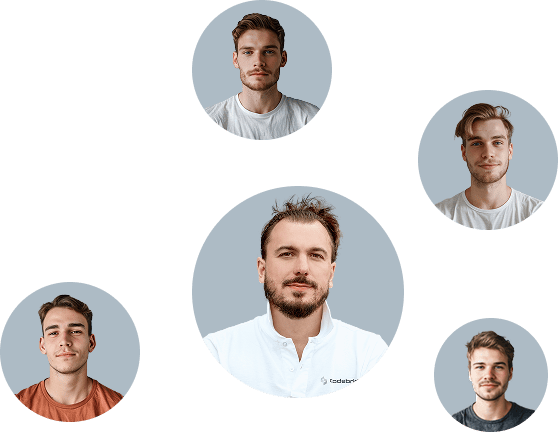DevOps, a methodology that integrates development (Dev) and operations (Ops) teams, has become an essential practice for enterprises seeking to accelerate software delivery, improve collaboration, and enhance overall efficiency. However, implementing DevOps in an enterprise environment is not without its challenges. These challenges range from cultural resistance to technological complexities, and if not properly addressed, they can hinder the effectiveness of DevOps initiatives.
In this article, we’ll explore some of the most common challenges enterprises face when implementing DevOps and provide actionable strategies for overcoming them.

1. Cultural Resistance and Silos
Challenge:
Cultural resistance is one of the most significant hurdles in adopting DevOps within an enterprise. Traditional enterprise environments often have well-established hierarchies and silos, where development, operations, and other teams work independently with limited collaboration. This lack of collaboration can lead to miscommunication, delays, and inefficiencies, undermining the very essence of DevOps, which emphasizes collaboration and shared responsibilities.
Solution:
Overcoming cultural resistance requires a deliberate and strategic approach:
- Leadership Buy-In: Successful DevOps implementation starts with strong leadership support. Leaders must champion the DevOps initiative and clearly communicate its benefits to the entire organization. This top-down approach helps create a culture that values collaboration, continuous improvement, and shared responsibility.
- Cross-Functional Teams: Break down silos by forming cross-functional teams that include members from development, operations, QA, security, and other relevant departments. These teams should work together throughout the entire software development lifecycle, fostering collaboration and knowledge sharing.
- Training and Workshops: Provide training and workshops to help teams understand DevOps principles, practices, and tools. Encourage a growth mindset and emphasize the importance of continuous learning and adaptation.
- Celebrate Successes: Recognize and celebrate small wins and successes along the way. Highlight examples of improved collaboration and faster delivery to build momentum and reinforce the value of DevOps.
2. Complex Legacy Systems
Challenge:
Many enterprises operate with complex legacy systems that were not designed with modern DevOps practices in mind. These systems can be difficult to integrate with new tools and processes, making it challenging to achieve the automation and agility that DevOps demands.
Solution:
To address the challenges posed by legacy systems, consider the following strategies:
- Incremental Modernization: Instead of attempting a complete overhaul of legacy systems, adopt an incremental modernization approach. Identify the most critical components that need to be updated or replaced, and prioritize them based on their impact on DevOps initiatives. This gradual approach minimizes disruption and allows for continuous improvement.
- Use of APIs and Wrappers: In some cases, it may be possible to create APIs or wrappers around legacy systems to enable integration with modern DevOps tools and practices. This allows teams to automate processes and improve collaboration without fully replacing the legacy system.
- Containerization and Microservices: Containerization and microservices architectures can help decouple legacy systems from newer components, enabling more flexibility and scalability. By breaking down monolithic applications into smaller, manageable services, teams can more easily adopt DevOps practices.
- Hybrid Approaches: For enterprises that cannot fully replace legacy systems, consider a hybrid approach that combines traditional and modern practices. For example, some processes may remain manual while others are automated, allowing teams to gradually transition to DevOps without disrupting critical operations.

3. Tooling and Automation Challenges
Challenge:
DevOps relies heavily on automation to achieve continuous integration, continuous delivery (CI/CD), and other key practices. However, selecting the right tools and achieving seamless automation across the entire development and operations pipeline can be challenging, especially in large enterprises with diverse technology stacks.
Solution:
To overcome tooling and automation challenges, enterprises should focus on the following:
- Tool Selection and Standardization: Carefully evaluate and select tools that align with the organization’s goals and technology stack. Where possible, standardize on a set of tools to ensure consistency across teams and reduce the learning curve. Consider factors such as ease of integration, scalability, and support for automation when selecting tools.
- Integration and Interoperability: Ensure that the chosen tools can integrate seamlessly with existing systems and with each other. Interoperability is crucial for achieving end-to-end automation and avoiding bottlenecks in the CI/CD pipeline.
- Automate Incrementally: Start by automating the most time-consuming and error-prone tasks, and gradually expand automation to other areas. This approach allows teams to realize the benefits of automation early on while minimizing the risk of disruption.
- Monitoring and Feedback Loops: Implement robust monitoring and feedback mechanisms to track the performance of automated processes and identify areas for improvement. Continuous monitoring allows teams to proactively address issues and optimize automation over time.

4. Security and Compliance Concerns
Challenge:
In enterprise environments, security and compliance are critical considerations that can sometimes be at odds with the fast-paced, iterative nature of DevOps. Ensuring that security and compliance requirements are met without slowing down development and deployment processes can be a significant challenge.
Solution:
To address security and compliance concerns in a DevOps environment, consider the following strategies:
- Shift-Left Security: Integrate security practices early in the development process—often referred to as "shifting left." By incorporating security into the CI/CD pipeline, teams can identify and address vulnerabilities before they reach production. This proactive approach reduces the risk of security breaches and compliance violations.
- DevSecOps: Embrace the DevSecOps approach, which integrates security into the DevOps workflow. This involves automating security testing, implementing continuous security monitoring, and fostering collaboration between development, operations, and security teams.
- Compliance as Code: Use "compliance as code" practices to automate compliance checks and ensure that all deployments meet regulatory requirements. This can include automated audits, policy enforcement, and continuous compliance monitoring.
- Security Training and Awareness: Provide security training to development and operations teams to ensure they are aware of security best practices and the importance of compliance. Encourage a culture of security awareness throughout the organization.
5. Scalability and Performance Issues
Challenge:
As enterprises scale their DevOps practices, they may encounter performance bottlenecks and scalability issues. Managing large-scale deployments, ensuring consistent performance, and maintaining the availability of applications across multiple environments can be challenging.
Solution:
To address scalability and performance challenges, enterprises should focus on the following:
- Scalable Architecture: Design applications and infrastructure with scalability in mind. Use cloud-native architectures, such as microservices and serverless computing, to enable horizontal scaling and ensure that the system can handle increased loads.
- Load Testing and Performance Monitoring: Implement continuous load testing and performance monitoring to identify potential bottlenecks and optimize system performance. Use automated tools to simulate traffic and monitor key performance indicators (KPIs) such as response times, latency, and throughput.
- Infrastructure as Code (IaC): Adopt Infrastructure as Code (IaC) practices to automate the provisioning and management of infrastructure. IaC allows teams to define infrastructure in code, making it easier to replicate environments, scale resources, and ensure consistency across deployments.
- Auto-Scaling and Elasticity: Leverage auto-scaling features in cloud platforms to dynamically adjust resources based on demand. This ensures that applications can scale up or down as needed, maintaining performance while optimizing costs.

6. Collaboration and Communication Breakdown
Challenge:
DevOps emphasizes collaboration and communication between development, operations, and other teams. However, in large enterprises with distributed teams and complex workflows, communication breakdowns can occur, leading to misunderstandings, delays, and inefficiencies.
Solution:
To improve collaboration and communication in a DevOps environment, enterprises should consider the following strategies:
- Unified Communication Platforms: Implement unified communication platforms that facilitate real-time collaboration and information sharing. Tools like Slack, Microsoft Teams, and Jira can help teams stay connected, share updates, and collaborate on tasks.
- Regular Cross-Team Meetings: Schedule regular cross-team meetings, such as daily stand-ups, sprint planning, and retrospectives, to ensure that all team members are aligned and informed. These meetings provide an opportunity to address issues, share feedback, and plan for upcoming work.
- Documentation and Knowledge Sharing: Encourage teams to document processes, decisions, and best practices. A centralized knowledge base can serve as a valuable resource for new team members and help prevent information silos.
- DevOps Culture: Foster a culture of collaboration and transparency by encouraging open communication and cross-functional teamwork. Recognize and reward collaborative behavior to reinforce the importance of working together towards common goals.
7. Managing Continuous Delivery and Deployment
Challenge:
Continuous delivery (CD) and continuous deployment (CD) are key practices in DevOps, enabling organizations to deliver software updates quickly and reliably. However, managing these processes at scale can be challenging, especially in complex enterprise environments with multiple teams and applications.
Solution:
To effectively manage continuous delivery and deployment, enterprises should focus on the following:
- Automated Pipelines: Implement automated CI/CD pipelines that streamline the process of building, testing, and deploying code. Automation reduces the risk of human error and accelerates the delivery of updates.
- Feature Toggles and Canary Releases: Use feature toggles and canary releases to manage the deployment of new features gradually. This approach allows teams to test new features in production with a subset of users before rolling them out to the entire user base.
- Rollback Strategies: Develop robust rollback strategies to quickly revert changes if issues are detected after deployment. Automated rollback mechanisms can help minimize downtime and reduce the impact of deployment failures.
- Continuous Improvement: Continuously monitor and optimize the CI/CD pipeline to identify areas for improvement. Collect feedback from teams and users to refine processes and enhance the reliability and speed of deployments.
Effective collaboration is the backbone of any successful DevOps initiative.
Conclusion
Implementing DevOps in enterprise environments comes with its share of challenges, but with the right strategies and mindset, these challenges can be overcome. By addressing cultural resistance, modernizing legacy systems, selecting the right tools, ensuring security and compliance, and improving collaboration, enterprises can unlock the full potential of DevOps. As a result, they can achieve faster delivery, improved quality, and greater agility in an increasingly competitive landscape.
Heading 1
Heading 2
Heading 3
Heading 4
Heading 5
Heading 6
Lorem ipsum dolor sit amet, consectetur adipiscing elit, sed do eiusmod tempor incididunt ut labore et dolore magna aliqua. Ut enim ad minim veniam, quis nostrud exercitation ullamco laboris nisi ut aliquip ex ea commodo consequat. Duis aute irure dolor in reprehenderit in voluptate velit esse cillum dolore eu fugiat nulla pariatur.
Block quote
Ordered list
- Item 1
- Item 2
- Item 3
Unordered list
- Item A
- Item B
- Item C
Bold text
Emphasis
Superscript
Subscript





















.avif)



.avif)

.avif)


